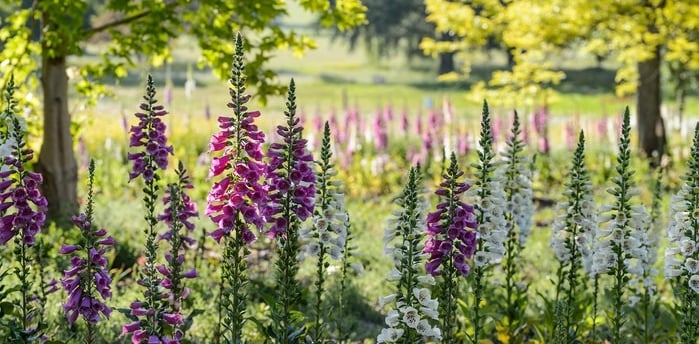How Long Do Plants Live?
A gentle look at what “perennial” really means, why not all plants stick around forever, and how to embrace the changing rhythms of a living garden.
Marcus Bergin
5/25/20252 min read


“How Long Do Plants Live?” – Rethinking What We Expect from Our Gardens
I was walking past a patch of Aquilegia this morning—those airy, bonnet-like flowers bobbing in the breeze—and I found myself wondering if it would still be there next year.
It’s a perennial, yes. But not in the way we often think.
You see, “perennial” has become one of those gardening words we throw around as a promise. Buy this plant, and it’ll come back. Set it in the soil, and it’s yours for life. But gardening has a way of gently reminding us that nothing is fixed—and certainly not forever.
Some plants return faithfully for decades, anchoring the garden like old friends. Others—well, they surprise us. One spring they’re there, lush and flowering, and by the next, they’ve vanished without fuss, like a favourite café that quietly closes its doors.
And that’s not failure. That’s life.
Perennials, despite the label, live on a wide sliding scale. Some truly are long-lived—peonies, for example, can outlast the gardener. Others, like many penstemons or columbines, give us just a handful of good years before needing to be refreshed, divided, or gently replaced. And then there are those that seed themselves generously, shifting their presence around the garden like whispers rather than monuments.
It’s easy to think something’s gone wrong when a plant doesn’t last. Maybe it flowered briefly and never came back. Maybe it sulked. Maybe the label said “perennial,” but the reality felt fleeting. But the truth is, gardens are not fixed paintings. They’re conversations. Some voices fade, others grow louder.
What helps is to start looking at the garden not as a set of permanent fixtures, but as a living system—one that changes with the seasons, with age, and with us. Just as we wouldn’t expect a tulip to bloom all year or a bee to linger through the frost, we shouldn’t expect permanence from every plant.
Instead, we can begin to read the signs: which plants need dividing to stay vigorous? Which might benefit from being allowed to seed and wander? Which were simply meant to be a passing joy?
There’s beauty in that. In the ebb and flow. In knowing that some things come and go, but others might just surprise us by staying far longer than expected.
If you're feeling unsure about a plant that’s disappeared or looking less enthusiastic, pause before digging it up. It might just be sleeping. Or it might be time to let something new take its place.
The garden is never finished. And that, I think, is what makes it magic.
Want to learn more about how different plants behave in the shade? Join our friendly Facebook group, where over 300,000 shade gardeners share tips, triumphs, and stories every day. It’s a great place to ask questions, swap ideas, and feel inspired by real gardens around the world.
And if you fancy a quiet listen, the latest episode of The Shade Gardening Podcast is just a click away—listen here.
Happy Gardening
Marcus